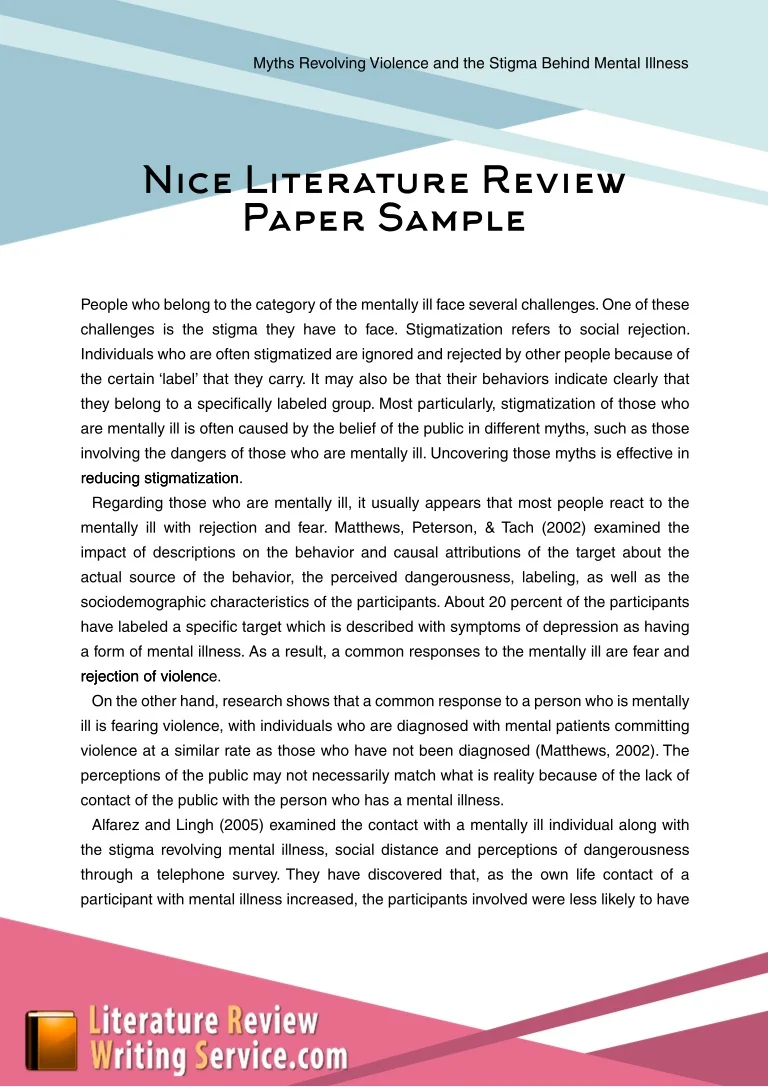
The Australian Financial Review reports the latest news from business, finance, investment and politics, updated in real time. It has a reputation for independent, award-winning journalism and is STEUBENVILLE — A Steubenville Catholic Central teacher is on administrative leave after allegedly having sex with a year-old student, authorities reported Friday. Corrissa McCalister, 21, who You can also use your review paper to resolve conflict between contradictory studies. “Once you have the core review section written, take a step back and look for common trends that emerge. Highlight key advances that have been made and areas where more focused research may lead to high impact. These are crucial to show where the field is heading, and any common pitfalls people have
Writing Review Papers
The aim of the review is to provide authors with constructive feedback from specialists, so that they can make improvements to their work. This is of key importance to ensure the highest possible standard. Make sure that you are familiar with the Instructions for Authors of the Journal. Before you decide to accept or decline the invitation to review, consider this:. Note that the paper sent to you for peer review is a privileged confidential document, the review paper.
You should also not contact authors directly, this is to protect your anonymity as IWA Publishing does not share your identity with authors. Comments should only be submitted to the journal via the peer review system. Do not allow your reviews to be influenced by the origins of a manuscript, by the nationality, religious or political beliefs, gender or other characteristics of the authors.
Start with the following quick checklist before you consider the content in detail:. Ensure that your final evaluation corresponds to your answers in the review form questions; especially should you be considering major revision or rejection. Sign In or Create an Account. search input Search input auto suggest. search filter All Content. Advanced Search. Sign In. Skip Nav Destination Reviewing a scientific paper - some guidelines The aim of the review is to provide authors with constructive feedback from specialists, so that they can make improvements to their work.
Before you start Make sure that you are familiar with the Instructions for Authors of the Journal. Before you decide to accept or decline the invitation to review, consider this: Is the paper within your area of expertise? If not, it may be difficult to provide a high quality review. Do you have any conflict of interest? For example, do any of the authors work at the same organization as you, the review paper, or do you know any of them personally?
If so, let the editor know. Make sure that you have the time. It is important to meet the deadlines. Two types of papers Most papers are in one of these categories: Research Papers : these papers are fully documented, interpreted accounts of significant the review paper of original research. Review Papers : these are critical and comprehensive reviews that provide new insights or interpretation of a subject through thorough the review paper systematic evaluation of available evidence.
Note, that a review paper is more than a literature overview. It must contain an in-depth critical review of the literature. Therefore, such a the review paper paper is expected to have at least one experienced senior researcher among the authors.
General criteria Your review will help the editor decide whether or not to publish the article: Does the paper provide insight into an important issue?
Does the paper tell a good story? Is the paper interesting for an international audience? Does the insight from the paper stimulate new, important questions? Is there a high probability that the paper will be read and cited by others? Your comments in the review Remember that authors will welcome positive feedback as well as constructive criticism from you. Comments that will be transmitted to the author s do NOT reveal your identity. Hint : use your own word processor and copy and paste your comments.
Getting started Start with the following quick checklist before you consider the content in detail: Is the length of the paper within the limits of the journal? Is the paper commercial or does it market a particular product or method? Is the paper structured properly abstract, keywords, the review paper, material and the review paper, discussion, conclusions, references, etc. Abstract, introduction and conclusion Abstract Make sure that the abstract is informative, can stand alone and covers the content.
A combination of the problem and the conclusions. Maximum length according to the Journal instructions. No figures or citations should be included here, the review paper. Keywords keywords, the review paper. Should be descriptive. The title words should not be repeated here.
Introduction It should state the objective, the problem - the research question to the review paper addressed, the review paper, provide a concise background: why the work was done, quote literature only with direct bearing on the problem - not a textbook, state a hypothesis — a suggested solution to the problem.
Should be short and concise. Must be possible to derive from the results and discussion. It is not a summary of the paper, the review paper. No references. Read the abstract, the review paper, introduction and conclusions Is there a clear message?
Having read the introduction — can you find out what the contribution of the paper is? Try to formulate the message in your own words. This can be the review paper later in the reviewer summary, the review paper. Do the perceptions or hypotheses in the introduction match the conclusions? You should be able to find this out within half an hour of reading.
After this you will probably have a first impression of whether the paper is worth publishing or not. If you are still positivethen continue the review process. If you are negativethe review paper can probably already explain why the paper is not worth publishing.
Detailed review Materials and methods Experiments : are the experiments documented adequately? Model derivations : is the process model derived properly? Is it already known? Results : are they presented so that you can easily see their significance? Data analysis : have statistics been used in an appropriate way? Is the raw data presented in such a way that you can see if the statistical method is adequate? Is the data normally distributed so that standard deviations are motivated?
Are outliers discussed? Figures : Can the figures explain the results? Are the figure captions informative? Tables : are all the inputs in the tables necessary to understand the message? Discussion Note that the discussion section makes the paper scientific! Can the author explain and interpret the results? Can you relate the discussion to the hypotheses? Have any similarities and discrepancies with other published data been identified and accounted for?
Conclusions Can the conclusions be derived from the results and the discussions? Check the references Have the author s done their homework with previous contributions? Compare the introduction with the reference list. Is it clearly indicated what is new in this paper?
Are there both older and newer references? How many references? There ought to be references in most cases. Are there any references that cannot be read by an English speaking reader?
At most references can be allowed where appropriate but should be queried. Is the author citing the original contribution or citing from a popular source? Make sure that the references cited in the text are included in the reference list and vice versa. Language issues. Many authors do not have English as their mother tongue, the review paper. The text does not have to be perfect English, but it has to be clear and understandable.
It includes numerous linguistic errors e. agreement of verbs that at times make it difficult to follow. I would suggest that it may be useful to engage a professional English language editor the review paper a restructure of the paper. You do not need to go through the language issues yourself. Your recommendation Ensure that your final evaluation corresponds to your answers in the review form questions; especially should you be considering major revision or rejection, the review paper.
Your recommendation will almost surely be one of these: Reject explain reason in your report Accept without revision remember that this is very unusual! Most papers can be improved in some way Revise — either major or minor explain the revision that is required, and inform the editor if you would accept to review the revised paper You will for some journals get informed by the editor about the decision of the paper.
You can also request this from the journal if you do not receive this. Remember: continue to keep details of the manuscript and its review confidential after the review is completed.
10 Simple Rules to Write A Scientific Literature Review Article
, time: 19:44How to review a paper | IWA Publishing

STEUBENVILLE — A Steubenville Catholic Central teacher is on administrative leave after allegedly having sex with a year-old student, authorities reported Friday. Corrissa McCalister, 21, who You can also use your review paper to resolve conflict between contradictory studies. “Once you have the core review section written, take a step back and look for common trends that emerge. Highlight key advances that have been made and areas where more focused research may lead to high impact. These are crucial to show where the field is heading, and any common pitfalls people have The Australian Financial Review reports the latest news from business, finance, investment and politics, updated in real time. It has a reputation for independent, award-winning journalism and is

No comments:
Post a Comment